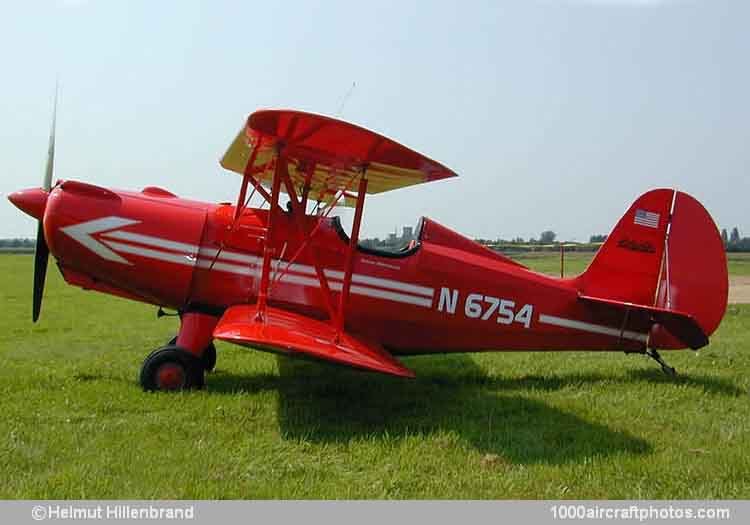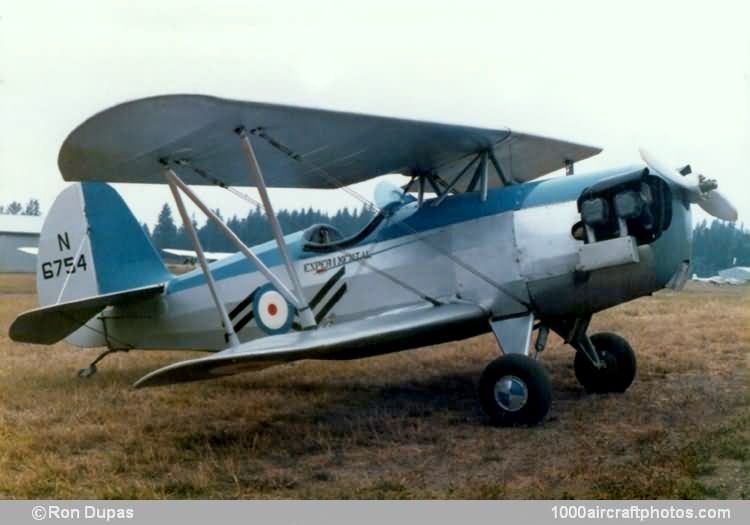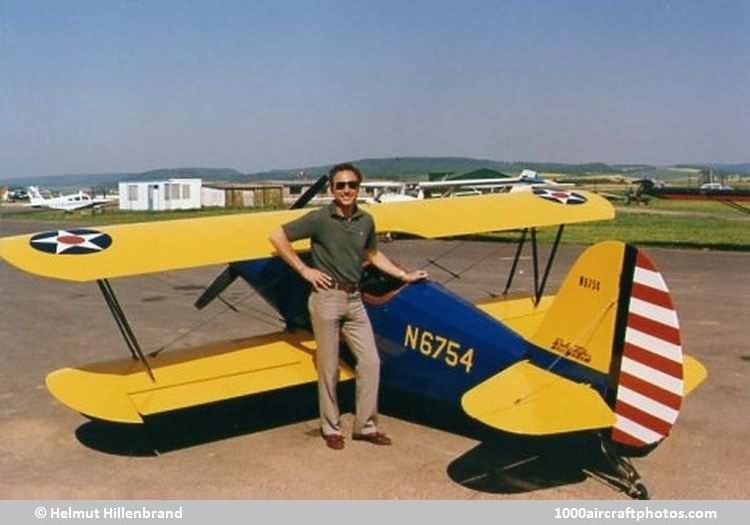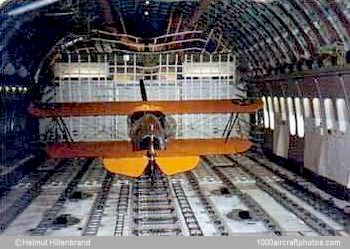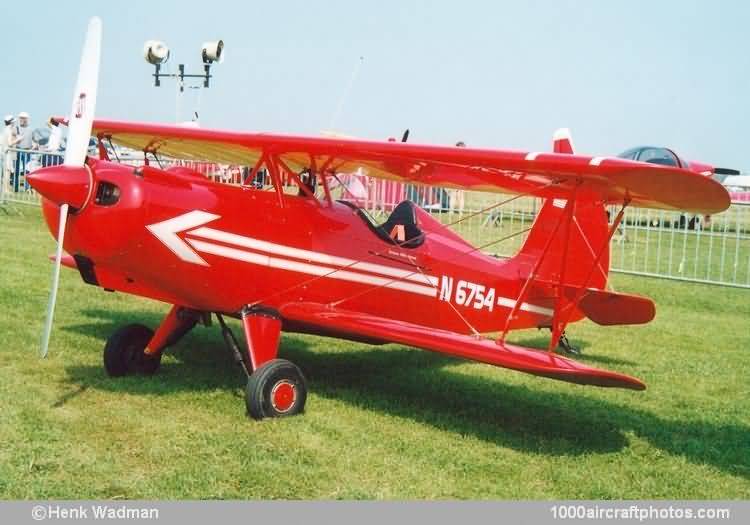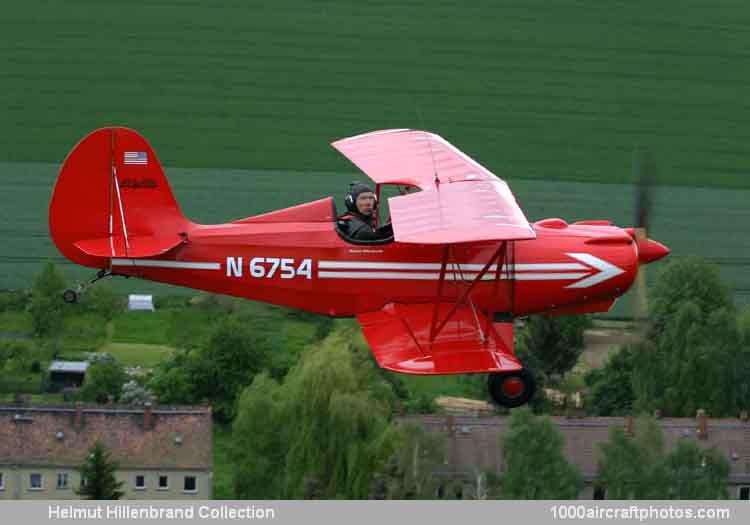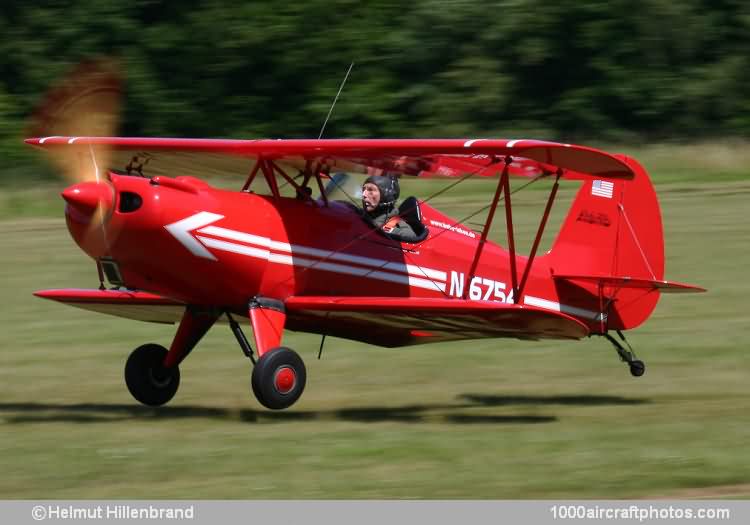12/31/2013. Remarks by
Johan Visschedijk: "Andrew 'Barney' Oldfield of Waterloo, New York, USA, designed and built the prototype of a small single-seat sporting biplane, by scaling down the design of the well-known Great Lakes Sport Trainer. The resulting aircraft became known as the Oldfield Baby Great Lakes and registered N9Y it first flew in 1954, and is still registered as of this day.
Of conventional construction, the Baby Great Lakes was initially not intended for reproduction. After numerous request plans were marketed by Oldfield Great Lakes Airplanes at Cleveland Ohio, and a second Baby Great Lakes was under construction early in 1965.
Barney Oldfield died during 1970, and on February 23, 1972, Harvey Swack announced formation of the Barney Oldfield Aircraft Company to market plans and material kits for the Baby Great Lakes. By 1992 over 930 sets of drawings had been sold, and over 100 aircraft were flying. Presently plans and parts are marketed by Aircraft Spruce & Specialty Company at Corona, California.
(
Ron Dupas Collection)
N6754 was built by John A. Peel of Snowhomish, Washington, USA, in 1973.
Subsequently it was owned by a number of Washington State residents, one of which changed the livery to the ancient blue and yellow colors of the USAAC.
In 1985 the aircraft was bought by an individual in Germany, the little plane flew non-stop to Hamburg in the cargo bay of a new Lufthansa Boeing 747 (sorry, no larger image).
Since the N6754 had some changes, like starter and baggage room, and had its colors changed again."
Type: Single-seat amateur-built sporting biplane.
Wings: Braced biplane, with N-type interplane struts, double landing and flying wires and N-type center section support struts. Wing section modified M6, tapering to USA 27 46 cm (18 in) from tips. Incidence 2° 30' on top wing, 1° 30' on bottom wing. Wood structure of spruce spars and Warren truss ribs, with overall fabric covering. Ailerons on lower wings only. No flaps.
Fuselage: Welded steel tube structure, fabric covered.
Tail unit: Wire-braced welded steel tube structure, fabric covered.
Landing gear: Non-retractable tail wheel type. Oleo main legs with size 5 x 4 wheels. Steerable tail wheel.
Power plant: One 80 hp Continental A80 flat-four engine, driving a two-blade fixed-pitch propeller. Provision for alternative engines of between 50 and 100 hp, including 1,500 and 1,600 cc Volkswagen engines. Fuel tank in front fuselage, capacity 12 gal (45 l).
Accommodation: Single seat, normally in open cockpit. Cockpit canopy optional.
